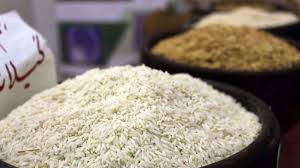ON Tuesday, the National Economic and Development Authority (NEDA) announced that it had approved a range of tariff adjustments, most notably a sharp reduction in the tariff rate on imported rice from the current 35 percent to 15 percent. The move is intended, NEDA Director General and Economic Planning Secretary Arsenio Balisacan said, to curb inflation, about half of which is accounted for by inflation of consumer food prices, particularly rice. While controlling inflation is certainly a reasonable objective, the country's experience with the manipulation of rice tariffs suggests that this is a largely ineffective tool to achieve that and, in fact, is likely to have even more costly unintended consequences.
The drastic cut in the rice tariff, which was originally recommended by Finance Secretary Ralph Recto, is part of the Comprehensive Tariff Plan (CTP) 2024-2028. The changes in the plan appear to be a mixed bag of sensible and questionable choices. Among the other changes in the revision of tariffs, an exercise that the government conducts every five years, reduced tariffs on other food commodities such as corn, pork and mechanically deboned meat were extended up to 2028. Other reduced tariffs were also extended, covering various agricultural and industrial goods.

One sensible decision of the NEDA board was to merge tariff lines on some chemicals and chemical products, textiles, machinery, and transport equipment to simplify the tariff structure. On the other hand, another dubious decision, along with the questionable move to slash rice tariffs, was to further lower tariffs on imported coal, presumably to help control electricity rates. As the Philippines exports about 65 percent of its own coal production, adjusting the tariff on coal imports certainly appears to be a tangential move with respect to the problem of elevated prices.
Likewise, addressing rice price inflation through a tariff reduction is almost certainly applying the wrong solution to the problem. NEDA has claimed that the lower tariff will "ensure access and affordability while balancing the interests of consumers and local producers," but past experience has shown this is not the result that can be expected. In a joint statement issued on Tuesday by a collective of 12 agricultural groups joined by Pangasinan 2nd District Rep. Mark Cojuangco, it was pointed out that previous reductions in tariffs have simply led exporters in countries such as Vietnam, Thailand, India and Pakistan to raise their prices. Not only does past wholesale price data seem to support their argument, it simply makes sense. From an exporter's point of view, a reduced tariff provides some margin to increase prices so that the net price level for the import customer remains the same.
The rice tariff reduction also appears questionable in light of data released by the Department of Agriculture (DA) on the same day the tariff decision was announced that indicates the production of palay (unmilled rice) for this year is robust, in spite of losses incurred due to the El Niño. The DA said that domestic production was still on track to hit 20.44 million metric tons this year, higher than the 20.06 million metric tons in 2023. That output, as well as support for farmers affected by the drought, is made possible in large part by the funding provided under the Rice Tariffication Law, which has now been severely undermined by the tariff reduction. The Department of Finance (DoF) has estimated the new tariff will cost the government about P10 billion in revenue, but it will almost certainly cost the agricultural sector several times that.
What's done is done, of course; even though the agricultural groups have called for the decision to slash the rice tariff to be retracted, the complex process of developing the CTP has already been completed. And in any event, the policymakers responsible for it in the DoF and NEDA should not be expected to react until some real-world data is gathered to confirm they made a bad decision. When that happens, however, we hope they have the same enthusiasm for correcting their mistake that they did in making it in the first place, for the sake of Filipino farmers and consumers who will bear the consequences of it.
Source: msn





